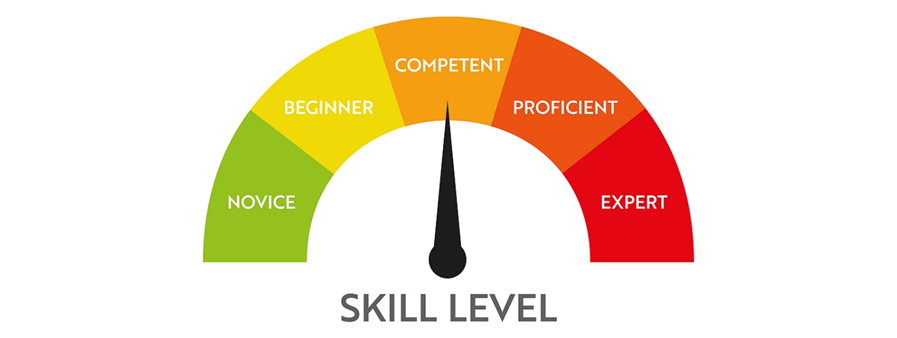👥 250,000 Trained
🏆 9 x Award Winners
⭐ 96% Review Rating
📈 24 Years of Proven Results
Written by Sean McPheat | 

“I’d like my sales team to use the consultative selling approach,” said the Sales Director.
It’s a request we get asked a lot when we’re approached to deliver Sales Training for an organisation.
Why is this? Well, the stereotypical approaches of the hard sell should be long behind us now. All the tricks used to sometimes coerce a customer into saying yes are outdated and they don’t work. In my book the consultative approach has been and always will be the best sales method to use and I’m glad that most sales managers and sales directors think the same way.
If you’re new to sales, the term consultative sales approach might be unfamiliar to you. In this guide, we’ll delve into the basics, including the definition of ‘consultative selling meaning’ and practical tips on how to implement it effectively.
Contents

A consultative sales approach is a method of selling in which the salesperson uses their expertise to guide the customer through the decision-making process, rather than simply trying to close a sale.
This type of approach is often used where the customer may need help understanding all their options and how each one could impact their business.
The goal of a consultative salesperson is to build trust and relationships with their customers so that they feel comfortable making decisions with the guidance they provide.
There are several key elements to a successful consultative sales approach, so let’s look at the consultative sales process steps:
1. Listening: To understand the needs of your customer, you have to be willing to listen to them carefully and ask probing sales questions that will help clarify what they are looking for.
2. Understanding: Once you have a good understanding of your customer’s needs, it’s important to be able to explain how your product or service can meet those needs in a way that makes sense to them.
3. Advising: After you’ve explained how your product or service can help, it’s time to give advice on what you think would be the best solution for the customer. This is where your expertise and knowledge come into play to help guide the customer to the right decision.
4. Following up: Even after the sale is complete, it’s important to follow up with your customers to make sure they are happy with their purchase and answer any questions they may have. This follow-up can help turn a one-time customer into a lifelong fan.

There are several benefits to using the consultative approach to sales, including:
1. It helps build trust with potential customers – When you take the time to get to know your customers and their needs, it helps build trust between you and them. They will be more likely to do business with someone they feel they can trust.
2. It allows you to show off your expertise – By taking the time to consult with your customers, you can show off your expertise and knowledge. This can help you close more sales as potential customers will see you as an authority figure in your industry.
3. It leads to repeat business – When you use the consultative approach, it usually leads to repeat business from happy customers. They will be more likely to come back to you for future purchases if they had a positive experience with you the first time around.
4. It can help you upsell and cross-sell – If you take the time to consult with your customers, you will be able to better understand their needs. This knowledge can then be used to upsell and cross-sell additional products or services that they may be interested in.
5. It builds relationships – The consultative approach is all about building relationships with your customers. By taking the time to get to know them and their needs, you can create a stronger bond which can lead to lifelong customers.
6. It can help you increase prices – If you are able to build strong relationships with your customers and provide them with exceptional service, they will be more likely to accept price increases.
7. It can save you time and money in the long run – The consultative approach may take more time up front, but it can save you time and money in the long run by preventing issues before they arise.
8. It sets you apart from the competition – Not all businesses take the time to get to know their customers and understand their needs. By doing so, you are setting yourself apart from the competition and showing that you care about your customers.
If you’re looking to improve your sales technique, the consultative approach may be the right fit for you. This method puts the customer’s needs first and foremost, which can help build trust and rapport. In addition, it allows you to show off your expertise and knowledge, which can be helpful in closing larger sales.
In transactional selling, the focus is on the products or services being sold. The salesperson’s goal is to make the sale and move on to the next customer. There is usually little to no relationship building involved.
In contrast, the consultative approach focuses on the needs of the customer. Salespeople using this method take the time to get to know the customer and understand their needs before making a recommendation.
The goal is to build a relationship with the customer and provide them with a solution that meets their needs, even if it isn’t the most expensive option.
The consultative approach can be more time-consuming than the transactional approach, but it can also be more rewarding. Customers who feel like they are being listened to and understood are more likely to make a purchase and continue doing business with you in the future.
Now that you know what a consultative sales approach is, let’s look at how it works in practice. Below are some hypothetical examples of the consultative sales process in action:
You’re a salesperson for a software company that makes accounting software. A potential customer comes to you and says they’re interested in your product, but they’re not sure if it’s the right fit for their business. You spend some time talking to them about their business needs and goals and ultimately what they want to achieve for their business to make them more efficient when it comes to accounting software.
Questions are asked around the scope and size of the business, the knowledge and experience of the accounting staff who will use the system, what’s important to them and what isn’t working now.
Based on this conversation, you recommend a different software that you think would be a better fit as they were looking at a version that was way too advanced for their needs at this current time.
By using a consultative approach, you’ve helped the customer find a solution that’s right for them, instead of just taking the easiest route to a sale. In the future, this customer is more likely to come back to you for help because they know you’re not just looking to make a quick sale.
The software was 10% cheaper too.
You’re a salesperson for a company that makes office furniture. A potential customer comes to you and says they need to buy some new chairs for their office. You ask them about their budget, what type of chairs they’re looking for, what they’ve currently got, what they’d like the chairs to be able to do, branding considerations, how many they need and a whole host of other questions to narrow down the options.
You then recommend a few different options that fit their needs and budget. By using a consultative approach, you’ve helped the customer find the right chairs for their office without trying to sell them the most expensive option.
As you can see, the consultative selling approach is all about understanding the customer’s needs and then finding the best solution for them. It’s not about trying to sell them something they don’t need or want. If you can focus on the customer’s needs, you’ll be more successful in selling to them.
You’re a salesperson for a computer company. A customer comes to you and says they’re looking for a new computer for a particular work-based task. While the customer knows a lot about their field of expertise, they know very little about computers. It’s your job to help them understand what type of computer they need to do their work.
You talk through what the customer will be using the computer for and explain the different features that would be most beneficial to them. You use language that is easy for the customer to understand and avoid using jargon. The customer feels confident that they are getting the right computer for their needs and ends up buying it from you.
In this scenario, you were successful in selling to the customer because you focused on their needs. You showed them that you were an expert on the subject matter and explained things in a way that was easy for them to understand. You built trust with the customer and ultimately made the sale.

Some potential situations where a consultative selling approach could be used:
When a customer expresses interest in a product but isn’t sure if it’s the right fit for their needs – In this case, you would use the consultative selling process to help them understand the product and how it could benefit them.
When a customer is looking to make a big purchase – With a large purchase, customers will often want to feel like they are making the best decision possible. By using the consultative selling approach, you can help them understand all their options and make an informed decision.
When a customer is unsure about what they need – In some cases, customers may not even be sure what they need. By using the consultative selling process, you can help them identify their needs and find the best solution for their problem.
A consultative selling process is also a good option if you’re selling a complex product or service. This type of selling gives you the opportunity to really dive deep and understand the customer’s needs before making a recommendation.
The consultative sales process can be used in a variety of situations. When a potential customer expresses interest in your product but isn’t sure if it’s the right fit for their needs, it’s a good opportunity to use this approach.
If they are undecided between two or more products, again, this is a good time to sit down with them and figure out which option would be best for them. If a customer is unsure about making a purchase, whether it’s because of cost or other concerns, going through the consultative sales process can help them feel more confident about their decision.
The key to making this approach work is to be genuinely interested in helping the customer. You can’t just go through the motions and expect to be successful. You need to take the time to listen to the customer, ask questions, and get a sense of what they’re looking for. Only then can you make recommendations that are truly in their best interest.
Of course, even if you do everything right, there’s always a chance the customer will decide not to buy anything. But even then, the consultative sales process can be valuable. If nothing else, you’ll have built a rapport with the customer that could pay off down the road.
The bottom line is that consultative selling is a win-win proposition. It’s good for customers because they get expert advice and guidance on finding the right product. And it’s good for businesses because it leads to more sales and happier customers.

We’ve been over the consultative sales process steps, but let’s look at the techniques you can use to make it successful:
Consultative selling is a great way to build relationships with your customers and close more sales. By taking the time to understand their needs and offer solutions, you’ll be able to differentiate yourself from the competition.
This type of selling also encourages sales teams to work together closely. By sharing information and collaborating, they can provide a better experience for the customer and increase the chances of making a sale.

Now that we’ve looked at what consultative selling is and how it can benefit your business, let’s look at some questions you can use during the sales process.
We’ve got 450 sales questions that you can use but these will give you a start.
Remember, the goal is to understand the customer’s needs and offer solutions. These questions will help you do just that.
These questions will help you get to the root of the customer’s needs so that you can offer them a relevant solution. By understanding their challenges, you’ll be able to show them how your product or service can help them overcome those challenges and achieve their desired outcome. Some salespeople go into sales pitch mode way too early. Give your customers a good listening to first.
Obviously, these questions are generic, and you will need to develop questions that are specific to your product or service. However, these questions will give you a solid foundation to start from.
Remember, the goal is to get to the heart of what the customer wants and needs so that you can offer them a solution that meets those needs. By asking the right questions, you’ll be able to do just that. Also, don’t think this is just an approach you should employ in face-to-face sales. It should be used for everything. From inside sales and telesales through to door to door selling. Use it!
If you’re looking for ways to improve your skills in this area then please check out our Selling Skills Training.
Or take a look at our full portfolio of Sales Training Courses.
Happy Selling!
Sean

Sean McPheat
Managing Director
MTD Sales Training
Updated on: 17 November, 2022
Related Articles

Search For More
